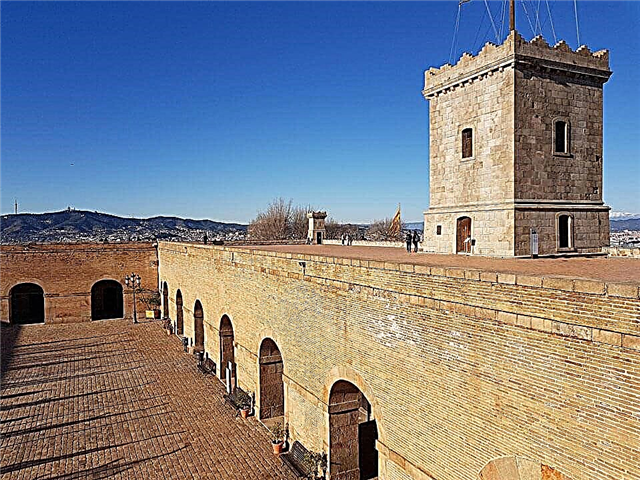In the south of Spain, in Andalusia, northwest of the Sierra Nevada mountains, an amazing city is spread over three hills. A rich history full of events, which led to the mixing of various religions and cultures, has left a tangible mark not only on the way of life, traditions of the people, but also on the appearance of Granada. Modern buildings here side by side with medieval buildings, Christian churches with Muslim mosques.
History
Until the 5th century AD, a very small village called Elibirg was ruled by the Phoenicians, then the Romans. Under the control of the Visigoths, Christianity began to gain popularity among the inhabitants. In one of the districts, a Jewish community settled, which gave its name to the rapidly growing city of Garnata al-yahud. It is very similar to the modern name, although there are different opinions on this matter.
From the 7th to the 15th century, African Arabs ruled in Granada. Their reign influenced the prosperity of these places. Crafts, science, culture, trade developed rapidly. In agriculture, the technique of irrigating the land appeared, the cultivation of almonds, oranges, lemons, and sugar cane began. At the same time, Islam, Jewry, and Christianity coexisted harmoniously side by side.

Alhambra
It was during the reign of the Moors that Granada acquired its most important and largest attraction. The Alhambra is a whole complex of palaces, fortresses, mosques, parks, striking in their beauty and magnificent decoration. The decoration of the premises intended for the rulers is amazing. Marble of warm colors, lace plaster carving, multi-colored ceramic mosaics amaze with the correctness of lines and impeccable symmetry of patterns. The abundance of fountains and green spaces resemble pictures of the Garden of Eden.

Alcazaba fortress
The beginning of this grandiose construction, which lasted almost six centuries, was laid by the construction of the defense fortress of Alcazaba. Its 26m high watchtower offers stunning views of the entire area. The preserved foundations of the barracks, various fortifications, pits for keeping prisoners give an idea of the military skills of the Moors of that time.

Generalife Gardens
The Generalife gardens surround the Sultan's “country residence”. They supplied the owners with fresh vegetables, at the same time served as a corner for relaxation and solitude in the bosom of nature. Picturesque alleys, canals supplying plants with water are decorated with majestic columns, arches, flower beds. The gardens were founded in the 14th century and have retained their charm to this day thanks to their skillful maintenance.

Arab Baths
The Arab Baths, built in the 11th century, are a special highlight of Muslim culture. These are not just rooms for cleansing the body; in Islam, ablution is an important part of etiquette. Over time, swimming pools, perfume baths, beauty and massage rooms have evolved into centers for leisure and socializing.

Cathedral
After the conquest of Granada by Christians, many buildings of a completely European look appeared here. The Palace of Charles V, which now houses the Museum of Fine Arts and the Museum of the Alhambra, differs from the Moorish residences in size and majesty. The monastery of St. Jerome delights with the relief decorations of the walls and ceilings. Christian churches began to grow on the foundations of many mosques. Among them is the Cathedral. The external monumentality of this building is mesmerizing, but the interior decoration exceeds all expectations. The paintings of famous artists are covered with shining gilding between the snow-white columns with graceful carvings.

The high vaults are filled with air, the spaciousness and splendor is breathtaking. The cathedral is active, modern masses are no different from those that were held five hundred years ago. The Royal Chapel, adjacent to the cathedral, contains the remains of Ferdinand of Aragon, who liberated Granada from the Moors. And Isabella of Castile, the one who sponsored Columbus's travels.
Colorful streets
Walking along the streets is always pleasant and full of unforgettable impressions. This is the only way to feel the special flavor of the life of the local population. Markets with a distinct Arab bias in narrow streets. Guitar sounds from street musicians, sometimes with songs. Many facades are decorated with graffiti, sometimes simple pictures, advertisements, sometimes real works of art. The charming street of the same name stretches along the Darro River. The many stone bridges connecting the Alhambra and Albaisin create a unique medieval atmosphere. From the Alley of the Sad opens amazing landscapes.

Navas Street is famous for its tapas. These are cold snacks served free of charge with drinks. More than ten restaurants with national cuisine, where you can get acquainted with the gastronomic peculiarities of these places. Tomato soup "gazpacho", fish "espeto", "ham" from pork. Of course "tortilla", a dish native to the Sacromonte Abbey, is another attraction. The relics of Saint Cecilio, the patron saint of the city, are kept here. Their authenticity has not been proven, but every February a procession of believers goes to the Abbey to celebrate the holiday.
Sacromonte district
There is another side from which you can look at Granada. This is the gypsy district of Sacromonte.

"Gitanos", as the Spanish gypsies called themselves, settled in these caves, starting from the 15th century, and got along well with the Moors. Moreover, they gave the world the Flamenco dance. Even now you can admire and even participate, get a couple of lessons in these underground rooms, which have all the comforts of civilization. Cozy houses are located a little higher on the hill. Their white walls are often decorated with various household items, decorated dishes, there is no end to the creative ideas of this people, it is easy to see this after visiting Sacromonte.

Viewpoint
At the very top, near the Church of St. Nicholas, there is a small park. It serves as a viewing platform for those wishing to admire the panorama. A delightful picture can be seen from here at sunset. Many poets sang this miracle. The Alhambra, a red fortress in the rays of the setting sun, looks like a fairytale castle against the backdrop of the snow-capped mountains of the Sierra Nevada.

Attractions of Granada on the map
[tp_calendar_widget origin = MOW destination = GRX responsive = true subid = ””]











